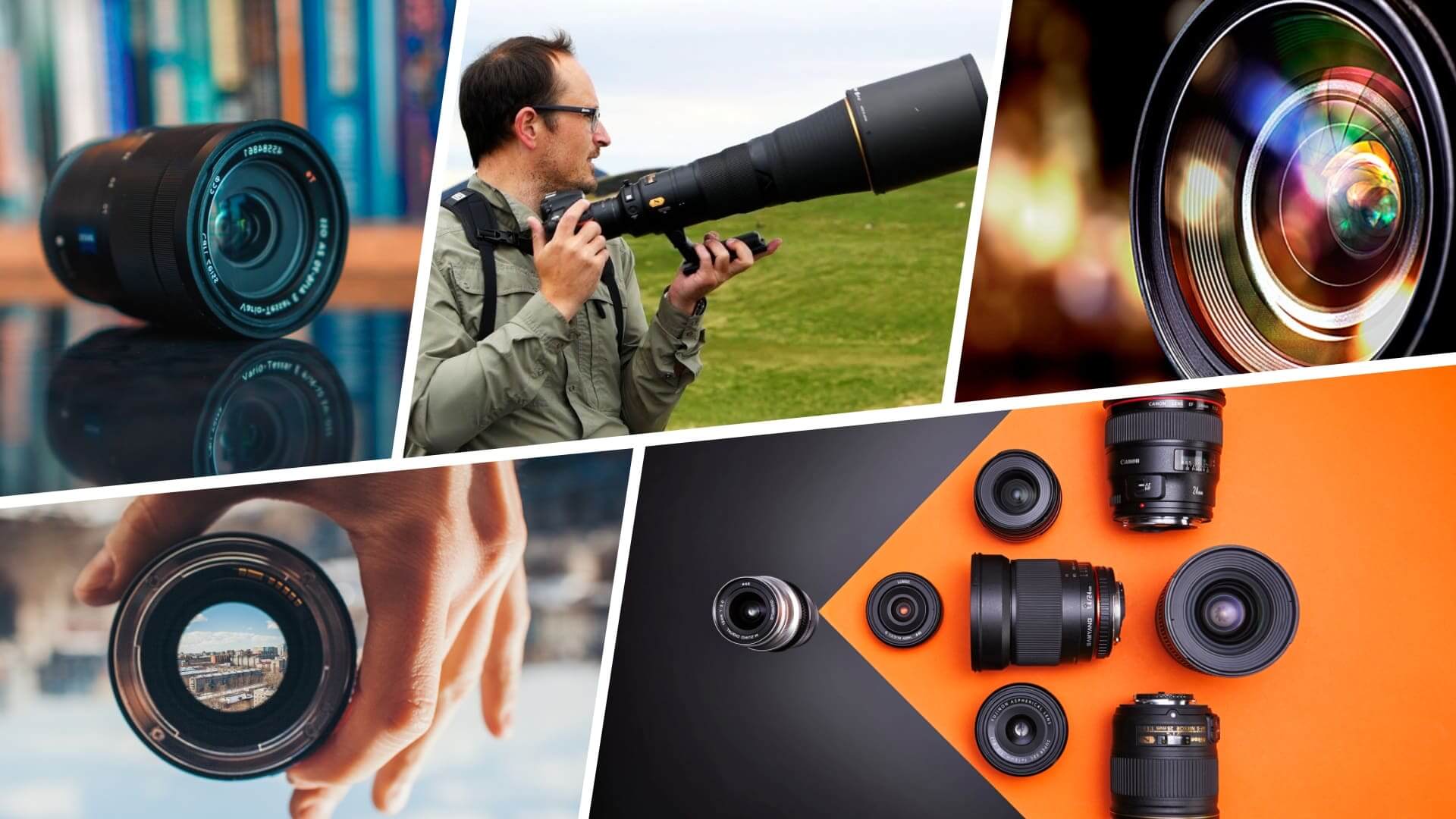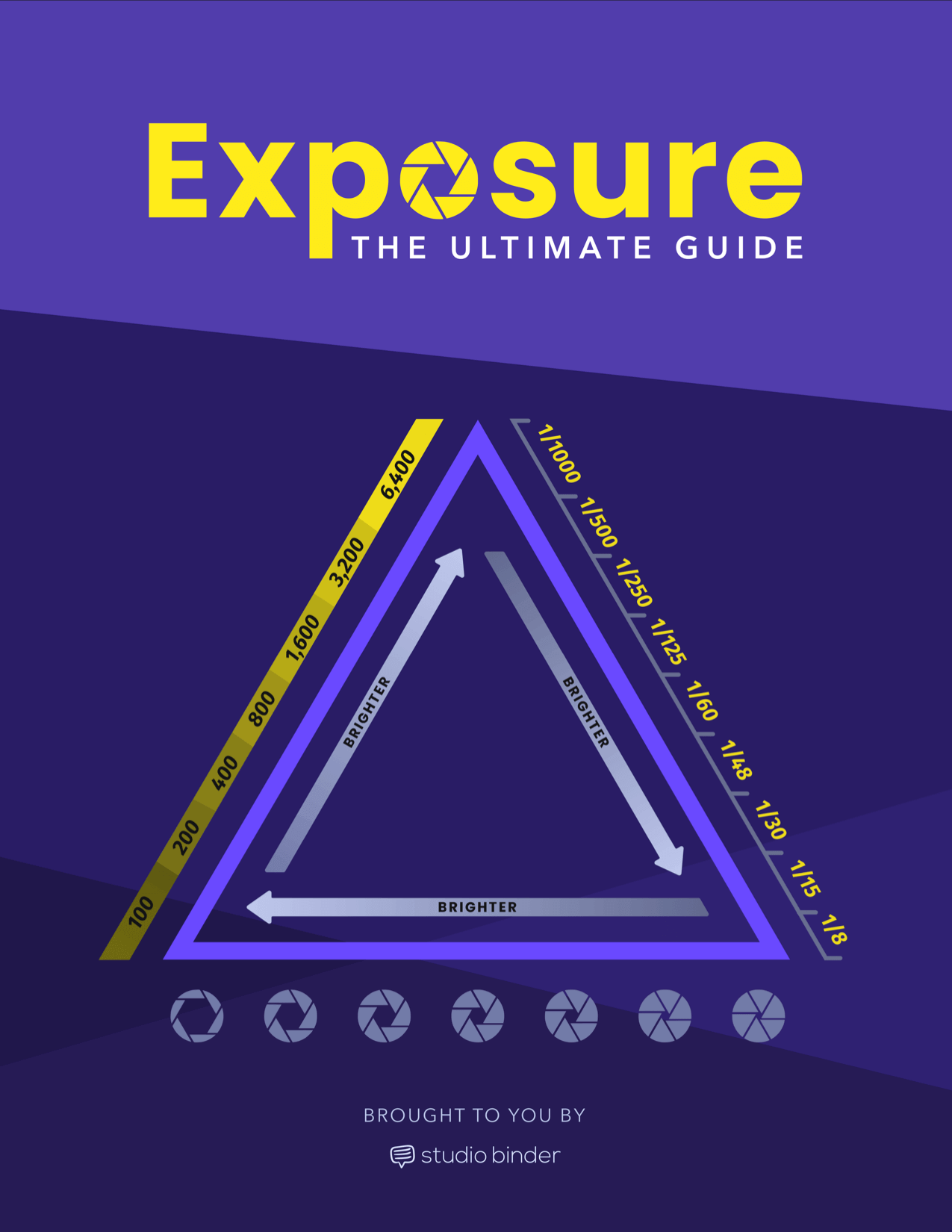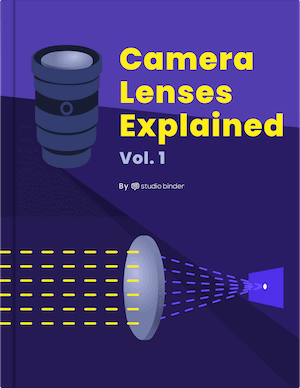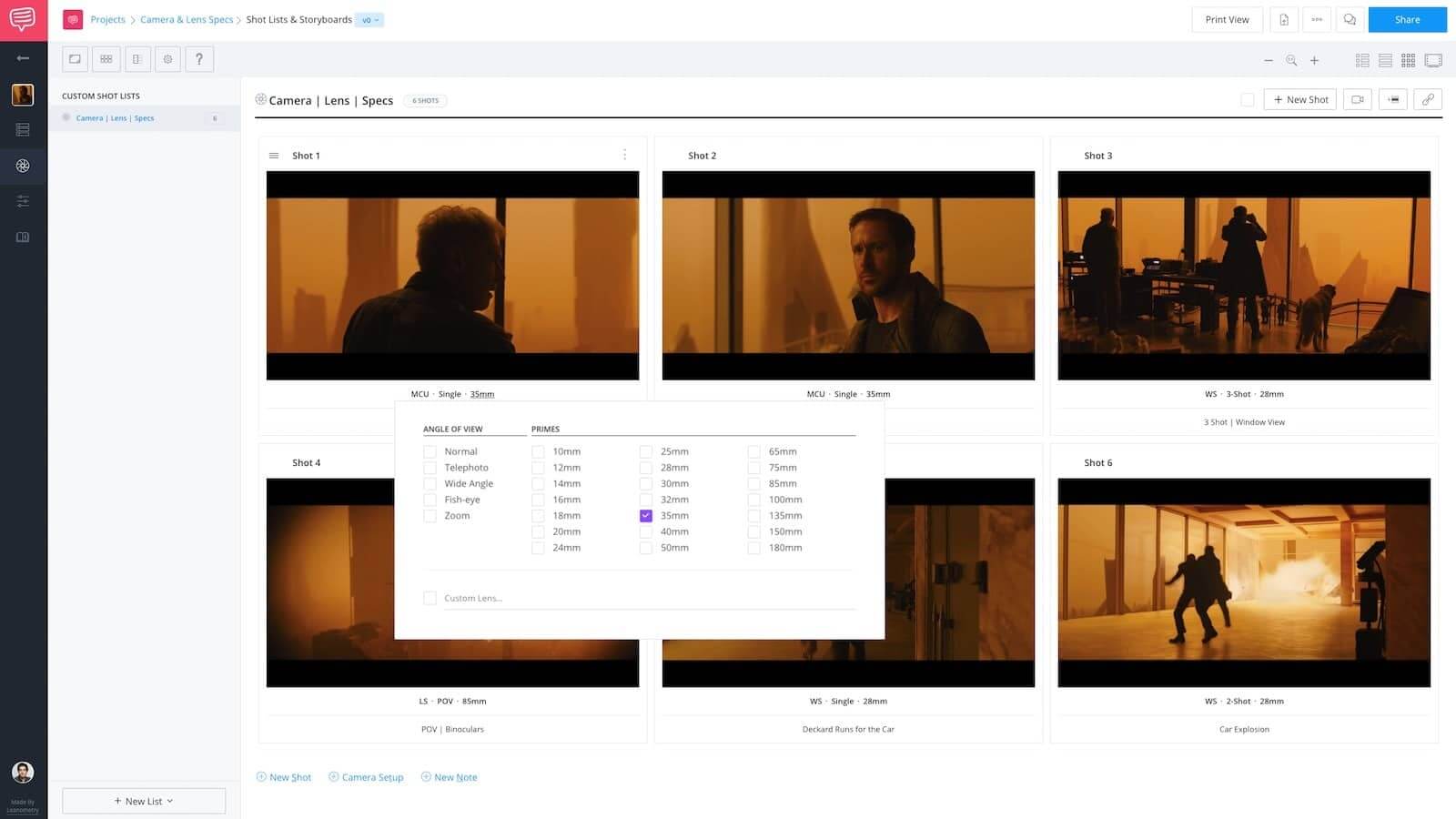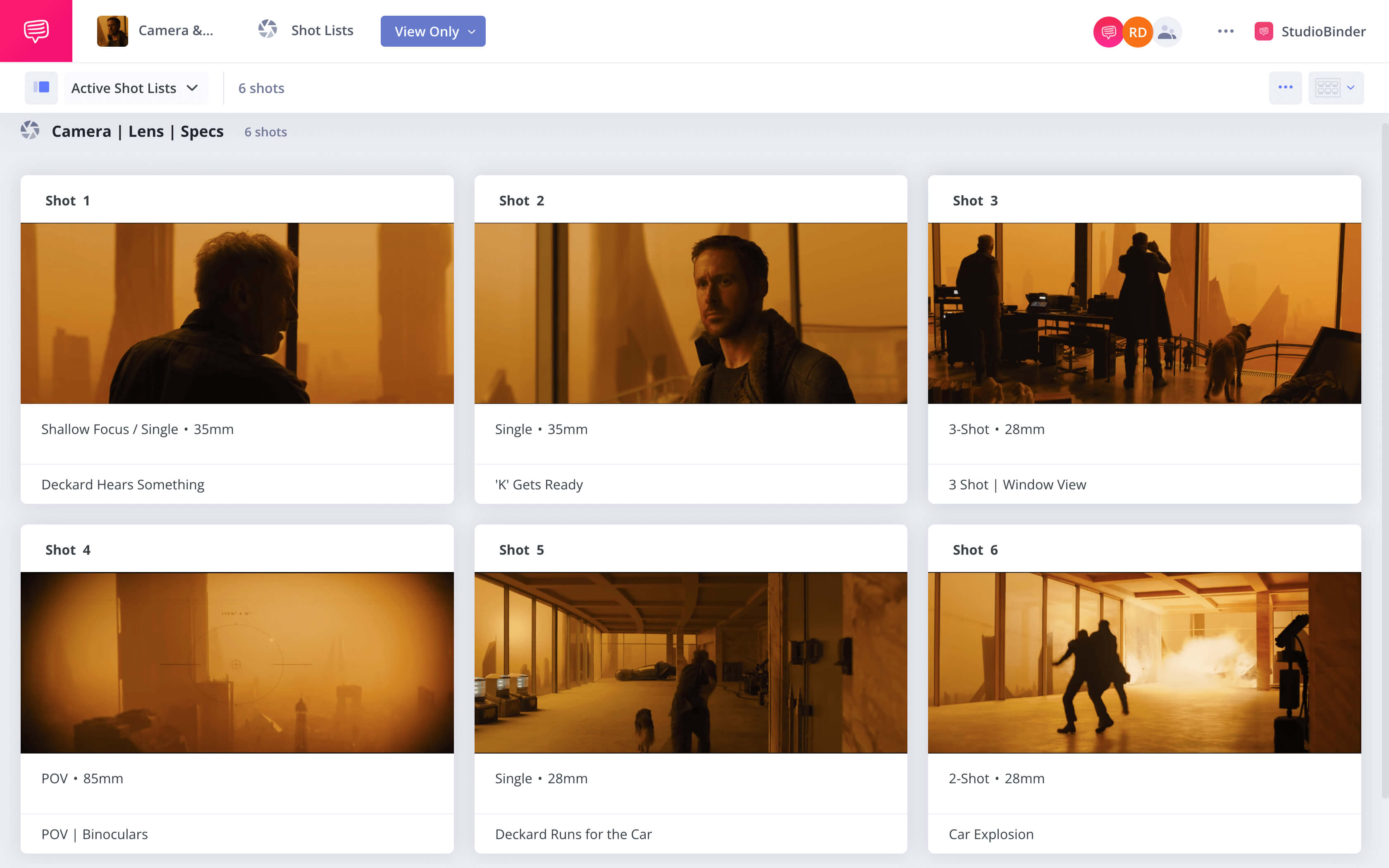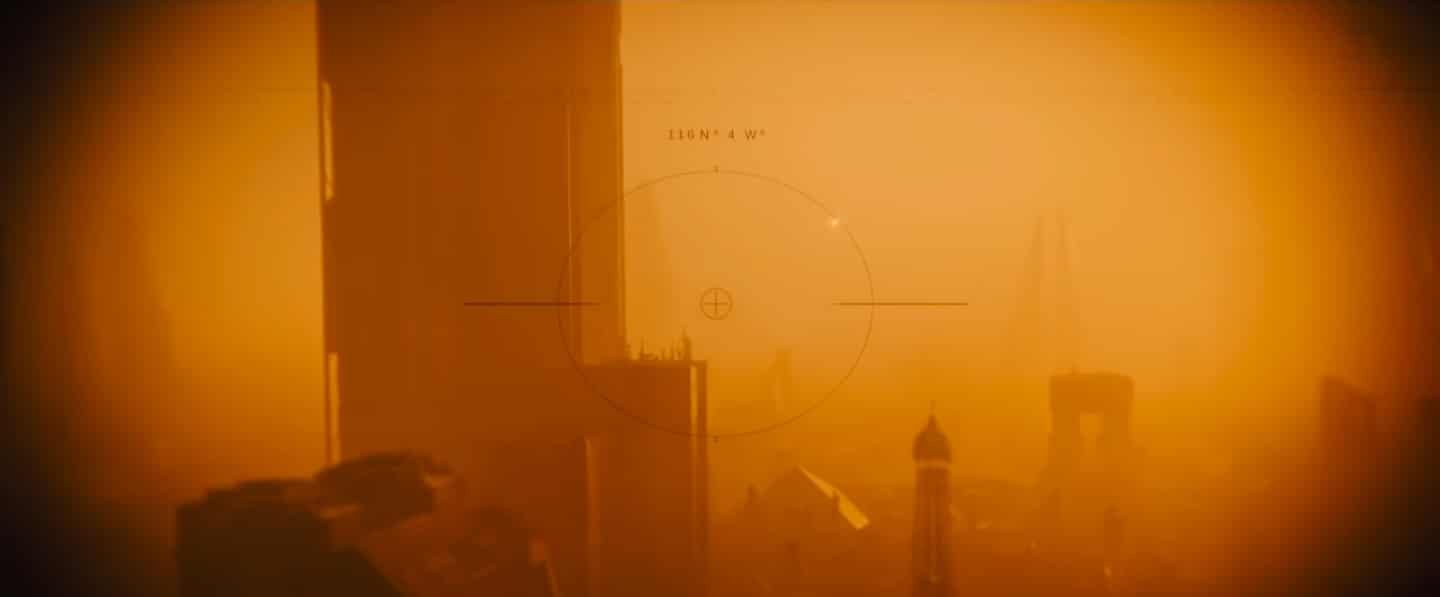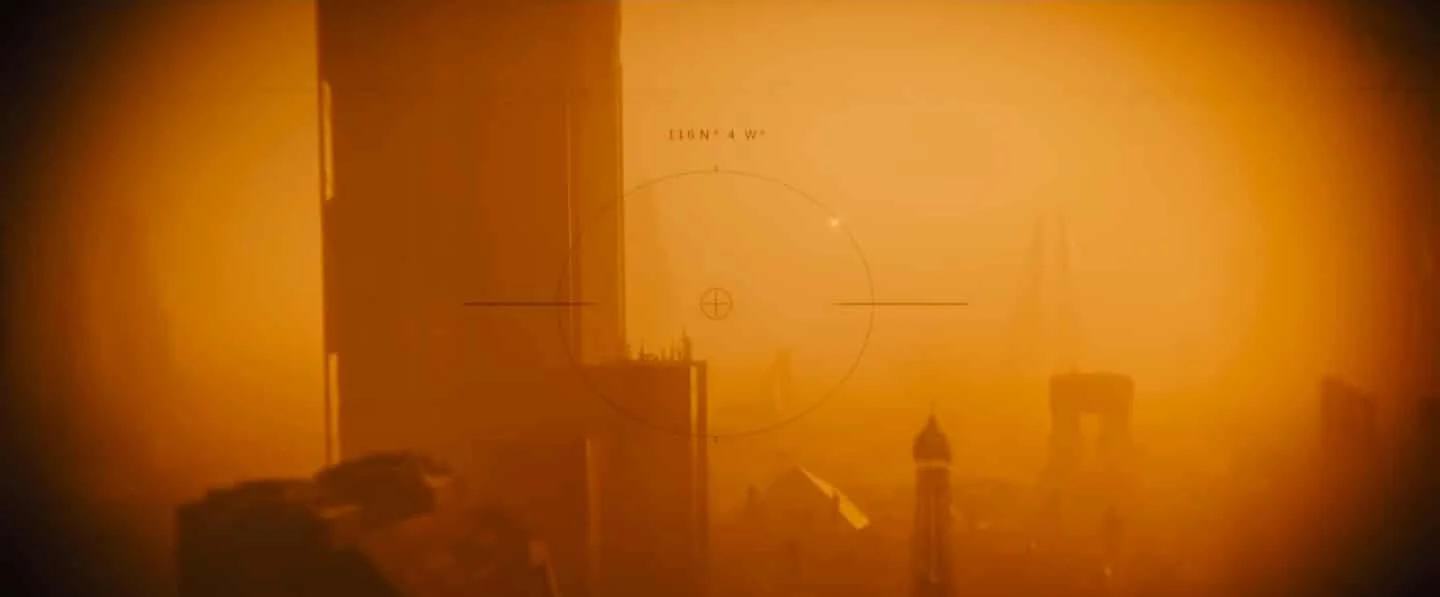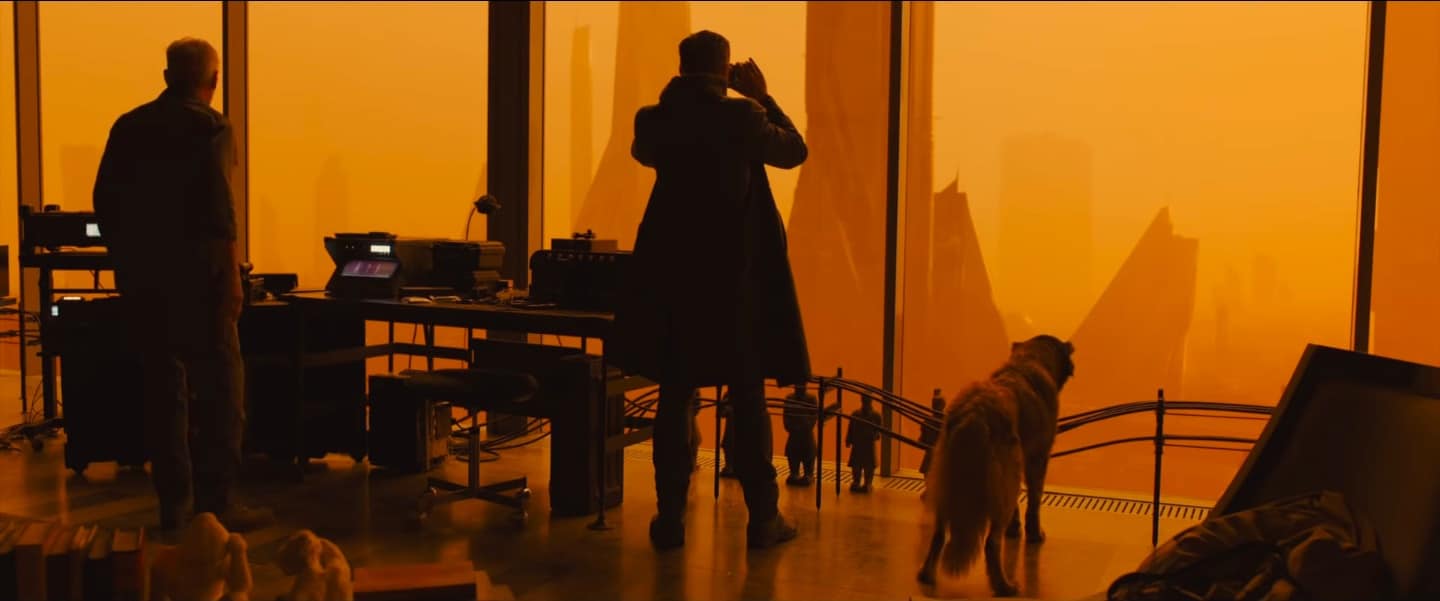Finding the right lens for your camera can vastly improve your images and overall production, but learning about video and photo camera lenses can be expensive and time-consuming. In this article, we explain photo and video camera lenses so that you can not only understand how your lens and camera work together but also which lens, or set of lenses, is the best option for you moving forward. This is Camera Lenses Explained.
Camera Lenses Explained
Photo and video camera lens basics
Camera lenses and optics in general have been improved upon long before the invention of the camera, because lenses were useful centuries before the Lumiere Brothers were even born.
CAMERA LENS DEFINITION
What is a camera lens?
A camera lens is an optical body that features a single lens or an assembly of lenses that mounts to a camera body. Some lenses are interchangeable, while others are built into the construction of the camera itself. Modern lenses attempt to set the angle of incidence and angle of refraction to equal values to decrease the amount of aberration, and feature a focus element that allows the operator to dictate which portions of the image are acceptably sharp, and which portions are blurred.
Camera Lens Characteristics
- Aperture — controls how much light enters the lens
- Focal length — dictates the field of view
- Depth of field — how much space in front of the camera is in focus (deep or shallow)
As this image illustrates, light coming into the lens is focused and aimed toward the image plane. For digital cameras, this is where the sensor is located. The distance between the point of convergence and the image plane is measured in millimeters (mm) and this what we mean by focal length.
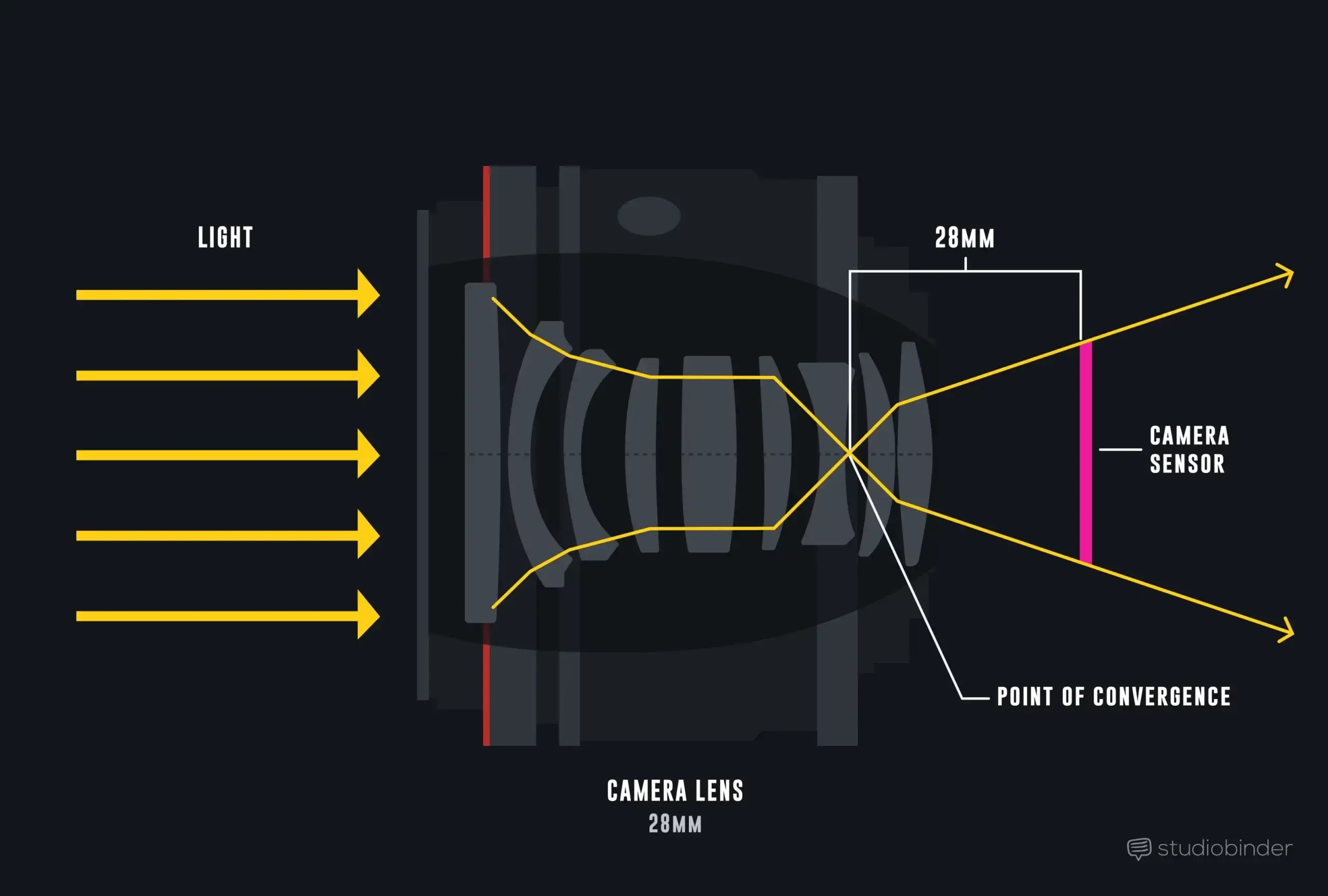
The anatomy of a camera lens
Before we get into the pros and cons of prime lenses, take a minute to download our FREE Ebook — Camera Lenses Explained Vol. 1 — where we cover everything you need to know about the different types of camera lenses, their unique visual characteristics, and how to use them.
Free downloadable bonus
FREE Download
Camera Lenses Explained
Every type of camera lens has distinct qualities and visual characteristics that every image-maker should understand. Download our FREE e-book to get in-depth explanations on prime vs. zoom lenses, anamorphic vs. spherical lenses, wide angle, standard, telephoto and even specialty lenses that all tell a slightly different story.
Knowing the camera lens basics is more than just understanding the technicals. Each lens tells a slightly different story based on the "film language" developed over the last century of filmmaking.
For example, here's DP Roger Deakins discussing his personal thoughts on lens choice and the storytelling value of those decisions.
Roger Deakins & Lens Choice • Subscribe on YouTube
Camera Lens Explanation
Focal length basics
What does "mm" mean on a lens?
Well, on the side and front of your camera lens you will find a small "mm" with a number, or set of numbers next to it. This is a measurement (in millimeters) between the optical center of the lens and the image plane.
This measurement dictates the lens' focal length, or the area that lens is able to capture, as illustrated in the image below. The "longer" the focal length, the narrower the field of view and "shorter" focal lengths capture a wider image.
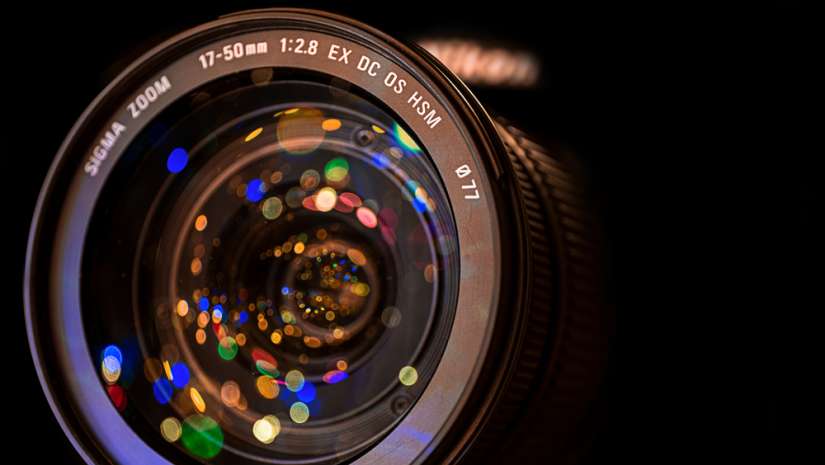
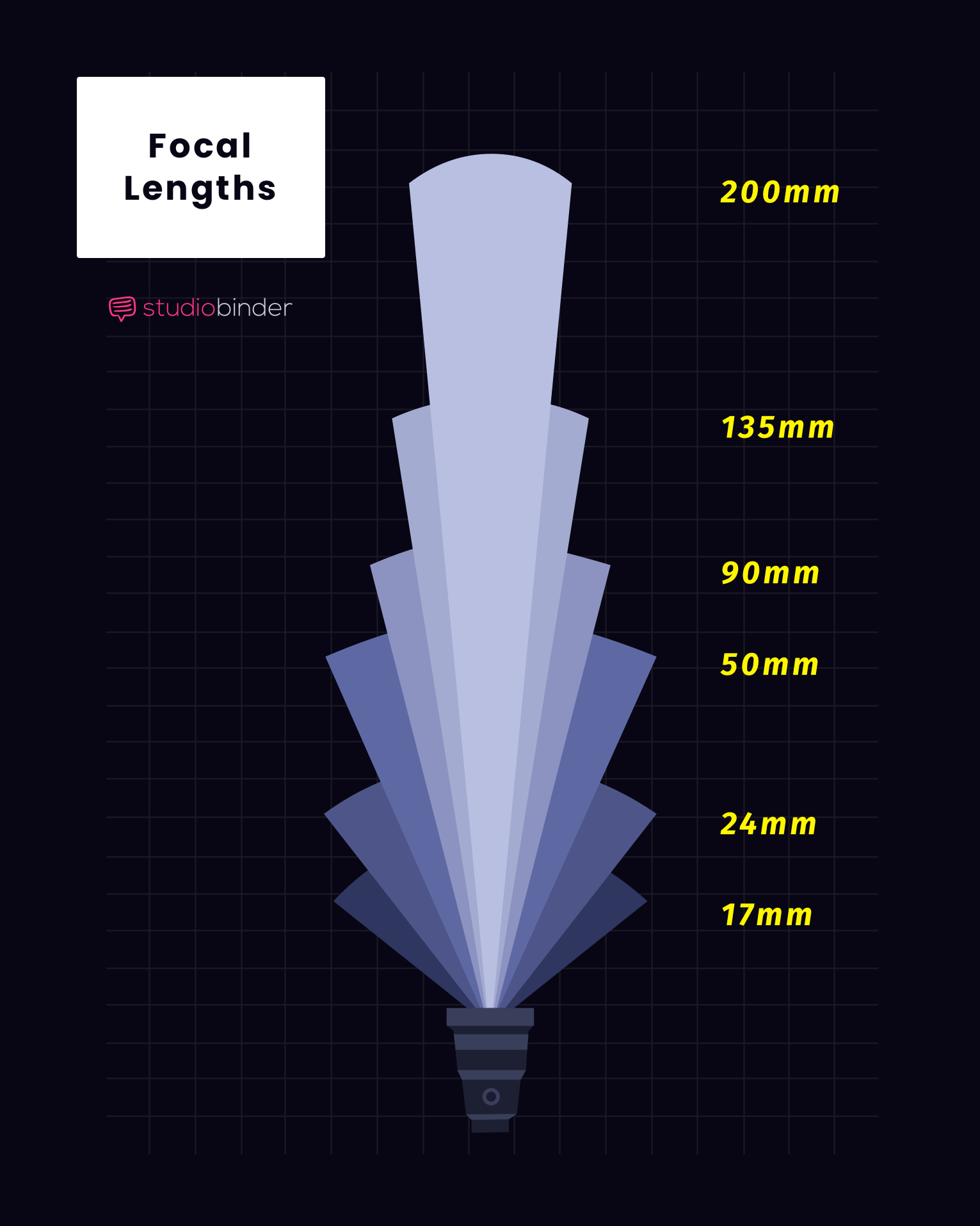
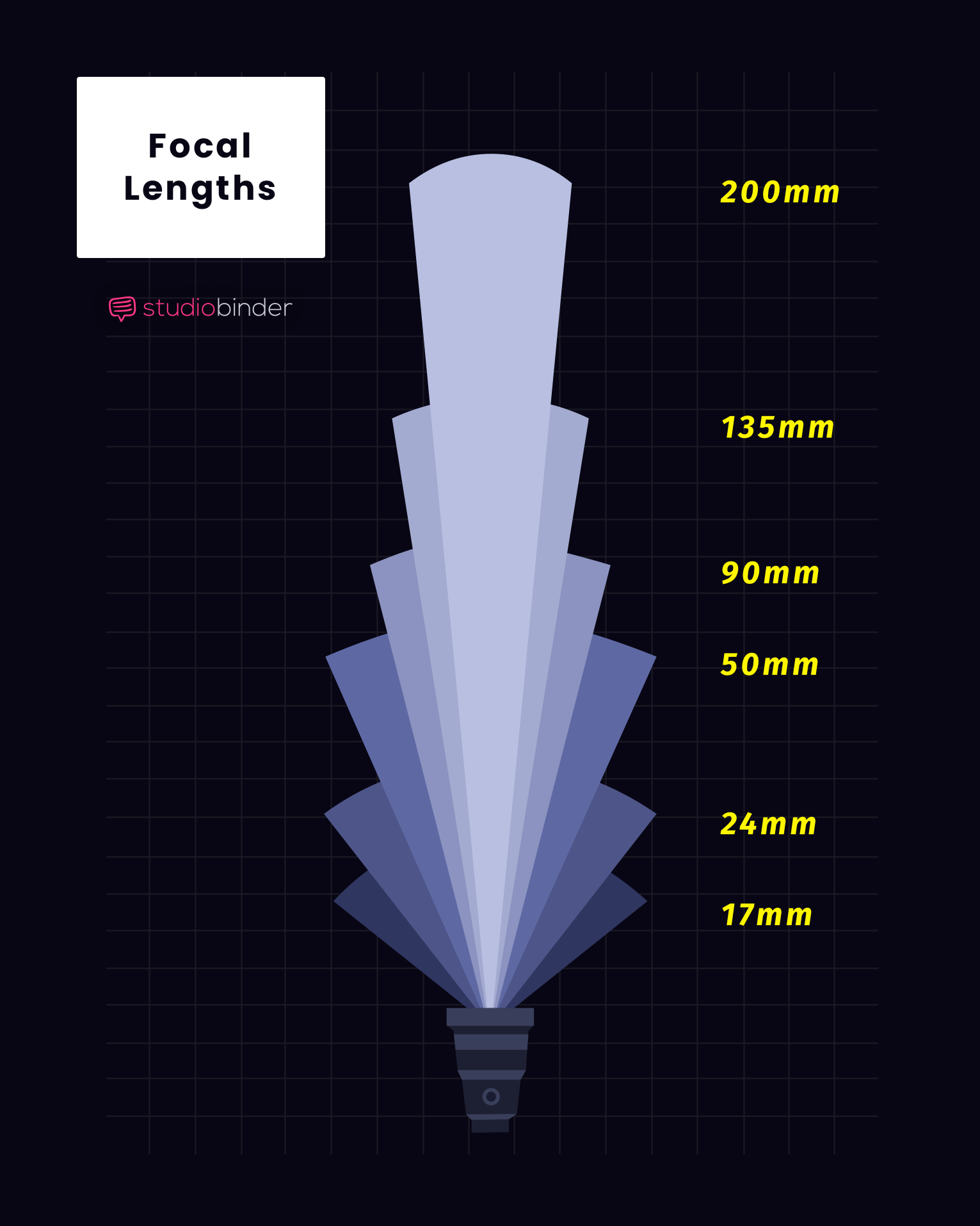

Camera lens mm • Focal Length
When it comes to camera lenses, your focal length will not only allow you to capture footage with different visual properties, but those properties will change the emotional effect the footage or image will have on the viewer.
There are both practical and creative reasons for choosing a specific photo or video camera lens, so understanding focal length might be the most important visual tool for a filmmaker or photographer to understand.
FOCAL LENGTH DEFINITION
What is focal length?
Focal length is the distance between the optical center of the lens, and the camera sensor or film plane when focused at infinity. The optical center is where light rays converge inside the body of your lens. The focal length defines the magnification and field of view for a given lens. This value is most commonly measured in millimeters. Prime lenses have set focal lengths whereas zoom lenses have variable focal lengths, and any change in magnification alters the visual properties.
Why is focal length important?
- Focal length dictates what part of the image is in focus, isolating elements in either the foreground, middle ground or background
- It generates visual context for your shots
- And it alters the visual properties of your shots
A basic way of explaining focal length is the magnification of your lens.
A longer lens will give you a narrow image that is closer to the subject, whereas a wider lens will capture more of the area from further back.
Camera Lenses Explained • Focal Length
Some high-profile performers even have a “lens clause” built into their contracts that limit the focal length of any lens used to capture their image.
These performers understand the power of focal length.
They have a desire to retain some control over their professional images, and while this isn’t an option for a traditional actor, certain musical artists and social media stars want to keep their image consistent.
Some people may refer to the focal length at the lens size.
Shot list with lens size | StudioBinder
Any lens with a focal length 35mm to 55mm is categorized as “standard” focal length. This is because the human eye has a similar field of view.
There is vast discussion on this topic, and some even say a more accurate human focal length to be closer to 22mm.
This is a relatively low focal length for narrative filmmaking, but that doesn't mean you won’t use it, and some directors will use it often.
Focal length matter both for photo lenses and video lenses because a photograph or a video recording that used a 50mm lens will have a drastically different look and feel to one that was captured with a 20mm.
Here is a scene from Blade Runner 2049 where the camera is simulating a pair of binoculars, and to recreate the visuals you might get from optics like this example below, the filmmakers would use a long angle lens, like an 85mm.
This is one example of using a specific focal length of lenses for practical application in your story, but focal length can also be used for emotional reasons.
Camera Lens Terms Explained
What is a camera lens aperture?
Aperture describes the light intensity of a specific image or set of images. Lens aperture controls light that passes through the lens to the image sensor or film.
This is measured in:
F-Stops (Estimated Measurement) or T-Stops (Exact Measurement).
You will normally find T-Stops used when describing the best camera lenses versus a standard digital photography lenses.
Understanding Camera Lenses Explained • What is Aperture?
T-Stop and F-Stop are not the same, though they are commonly mixed up or used in place of one another.
Professional filmmakers deal with T-Stops.
While many digital photography and indie filmmakers use the term F-Stop, it really depends on the lens you’re working with. Just know that they both refer to aperture stops.
The lower the stop number...
The higher the aperture (wider the opening).
That means that a T2 is higher than a T8. That’s because the aperture is wider, and therefore lets in more light.
Higher light intensity = Higher stop number
Camera lenses with higher stop ratings and wider openings allow more light, which means you can film in darker locations. Aperture range of a lens is expressed by the lens ratio (focal length divided by max aperture).
RELATED POSTS
Understanding Cameras and Lenses
What is shutter speed?
Shutter speed is the amount of time the shutter is open. This is typically measured in fractions of a second, especially with video recording.
With still photography, shutter speed is much less rigid than with cinema & television because still photography is viewed as a single frame.
But for video, 98% of the time you’ll want your shutter speed to double your frame rate. Here's a breakdown of shutter speed.
What is Shutter Speed? • Subscribe on YouTube
Cinema Frame Rate
The standard frame rate is 24fps (23.976fps), which means your shutter speed should be set at 1/50. This means the sensor is exposed for 1/50th of a second. This 180 Degree Shutter Rule is meant to provide filmmakers with the look and feel of what we're used to seeing over decades of filmmaking.
Television Frame Rate
The standard frame rate is 30fps (29.97fps), which means your shutter speed should be set at 1/60. This means the sensor is exposed for 1/60th of a second.
You may notice that the math here is off a bit, and there are some very complicated and logical reasons why these numbers have evolved over the years. When would I use a non-standard shutter speed?
How about the Omaha Beach scene in Saving Private Ryan?
Shutter Speed • Saving Private Ryan
In this scene, the crew actually replaced the shutter blades to shorten the amount of time the film was exposed.
This created a jagged look that really works well for action.
Most likely you’re not going to replace the shutter on your camera. You can achieve a similar look by increasing shutter speed to 4x or 8x the frame rate.
Example: If you are shooting a film at 24fps, you might set your frame rate at 1/100 or 1/200 to achieve a choppy, staccato look.
Math is your friend in film & television.
Camera Lenses Explained
What is depth of field?
Depth of field refers to how much of your image is in focus, and more specifically the area of acceptable focus.
A shallow depth of field will give you a blurred background, while a large depth of field will keep everything in focus so that we can see everything around us.
Ultimate Guide to Depth of Field • Subscribe on YouTube
With a shallow depth of field, your viewer (often) has less imagery to digest, and you can place more emphasis on a specific part of your frame.
In this example below, you can see acceptably sharp imagery all around the frame, and even far off into the distance.
This shot has a large, long, or deep depth of field.
Camera lens specs from Blade Runner
Other times you want your entire scene in focus to allow your viewer to “drink it all in.” It’s a toolbox. Different tools for different jobs.
You wouldn’t use a hacksaw to hammer in a screw, would you?
VIDEO CAMERA LENS BASICS
What is aspect ratio?
The aspect ratio of a lens is determined by the sensor size (or film size) of the camera with which it is intended to mount. If a lens is built for an APS-C size sensor, it will not line up correctly with a full-frame camera.
You may have the correct mount, so the lens will physically attach to the camera, but it won’t have the correct opening size, and thus creates a vignette where the light is absent.
Our video on aspect ratios shows you how different ratios are used for presenting final cuts of projects, but your camera lens aspect ratio cannot be changed, as it is baked in the construction of the lens.
Aspect Ratios • Subscribe on YouTube
As you noticed from the video above, your subject matter can help determine which aspect ratio is best for your project.
Consider this when selecting a camera lens.
2
Camera Lenses Explained
THINGS TO KNOW ABOUT CAMERA LENSES
CAMERA LENS EXTRAS
What is lens breathing?
Lens breathing is the amount of shift in your angle of view when focusing. Most high-end lens manufacturers will eliminate breathing completely, but if you’re looking to buy or rent a kit for your low budget film you’ll want a kit that has little breathing.
Lens breathing
In still photography this isn’t much of an issue because an image is a single frame. Can you imagine your frame composition changing while pulling focus in a scene? Less than ideal.
Camera Lens Explanation
What is lens flaring?
Lens flaring is when light is scattered in a lens system, usually caused by bright lights that shine directly into the eye of the lens. This can be more prominent in anamorphic lenses than spherical lenses but it can be achieved with both types.
Camera Lenses Explained • Lens Flares
Lens flares are often considered to be unwanted artifacts in your image. But they can also add a visual texture to your imagery. If you know J.J. Abrams' directing style, the first thing that comes to mind is his use of lens flares.
Camera Lenses Explained
What is chromatic aberration?
Chromatic aberration is your lens failing to focus all colors to the same convergence point. This normally presents itself as “fringes” of color along boundaries that separate the light and dark parts of your image.
Chromatic Aberration
This is one of those really advanced lens specs that professional cinematographers give attention.
Camera Optics Explained
What is bokeh?
Bokeh is a term used to describe when a lens renders out-of-focus points of light. It comes from the Japanese boke, and translates to “blur” or “haze.” There are at least three types of bokeh you can achieve:
Camera Lens Bokeh
As you can see from the video above, different lens quality changes the type of bokeh you’ll be able to achieve. Even your custom bokeh will look a little different when using an anamorphic lens.
CAMERA LENSES EXPLAINED
What is focus throw?
Focus throw is the physical rotation of the focus ring from the MFD (Minimum Focus Distance) to ‘infinity,’ which is measured in degrees.
It’s how much room you actually have to pull focus.
Cinema lenses have a dramatically higher throw than still photo lenses.
The throw is very important in cinema and television because you need to make pinpoint adjustments when pulling focus from one subject to another. The more degrees available, the more accurate your focus pull.
Cine lenses vs Photo lenses
Performing focus pulls with still photography lenses can also shake the lens, resulting in footage that may be deemed unusable during the edit.
There are focus pull accessories for still photography lenses, but the actual focus throw will likely remain the same.
Free downloadable bonus
FREE Download
Camera Lenses Explained
Every type of camera lens has distinct qualities and visual characteristics that every image-maker should understand. Download our FREE e-book to get in-depth explanations on prime vs. zoom lenses, anamorphic vs. spherical lenses, wide angle, standard, telephoto and even specialty lenses that all tell a slightly different story.
RELATED POSTS
UP NEXT
Types of camera lenses
So, what does the camera lens do? Beyond focusing light to the focal plane, your camera lens creates the way your viewer watches your story. It changes the way you communicate with your audience.
All of the information you just read works for digital cameras and for film cameras, and that’s the beauty of lenses. Beyond some lens quality and lens technology advancements, lenses have stayed the same for centuries.
We explain how each lens is categorized, the technology and science behind it, and how they’re used in filmmaking and photography.
Up Next: Types of camera lenses →
Showcase your vision with elegant shot lists and storyboards.
Create robust and customizable shot lists. Upload images to make storyboards and slideshows.
